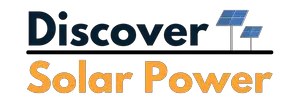Can a Solar Generator Power a Whole House?
Metaphorically speaking, harnessing the sun’s energy to power an entire household seems like a beacon of sustainability and self-reliance.
However, the practicality of whether a solar generator can truly sustain a whole house’s energy needs remains a topic of contemplation.
Factors such as size, storage capacity, and power output play pivotal roles in determining the feasibility of this eco-friendly power source.
Let’s investigate the intricacies of solar generators and their potential to revolutionize our energy consumption habits.
Continue Reading to Understand These Key Points:
- Solar generator size must match total household wattage requirements for whole-house power.
- Component selection is crucial for optimal performance and efficiency in powering a whole house.
- Battery capacity plays a significant role in storing generated solar power for continuous usage.
- Efficient electricity management is essential to maximize solar generator capabilities for whole-house power.
Factors Influencing Solar Generator Efficiency
Geographical location greatly impacts the efficiency of a solar generator system by influencing sunlight exposure, which directly affects the power output. When contemplating solar generator efficiency, factors such as solar generator size, power consumption, and battery efficiency are essential.
The size of the solar generator must align with the power consumption needs of the house to guarantee adequate energy supply.
The type of battery used, particularly lithium-ion batteries or reputable brand batteries, plays a major role in the overall efficiency and reliability of the system.
The number of sun hours per day in a specific location plays a crucial role in determining how much power the solar generator can generate and store.
When setting up a solar generator system for a whole house, it’s important to take into account the location’s impact on sunlight exposure and select components that optimize efficiency and performance.
Powering Essential Appliances
Considering the wattage requirements of essential appliances is paramount when planning to power them with a solar generator during outages.
To ensure a successful operation, follow these vital steps:
- Determine Appliance Wattage: Make a list of essential devices like refrigerators, lights, and communication devices, noting their wattage requirements. This step is vital for selecting a solar generator with adequate power output.
- Check Inverter Capacity: Verify that the solar generator has an inverter capacity that can handle the starting surge and continuous power demands of essential appliances. A mismatch here can lead to malfunctions or damage to devices.
- Manage Electricity Usage: During power outages, prioritize essential appliances over high-energy consumers like air conditioners. By efficiently managing electricity usage, you can prolong the runtime of the solar generator and keep your household running smoothly.
Supplementing Traditional Power Sources
Supplementing traditional power sources with solar generators enhances resilience and sustainability in residential energy systems. Solar generators can be used to provide backup electricity during outages, reducing reliance on the grid and lowering energy costs.
By harnessing solar energy, homeowners can decrease their carbon footprint and contribute to a cleaner environment.
Grid-tied solar generators offer seamless integration with existing electrical systems, ensuring a continuous power supply. Portable solar panels can be used to charge the generator’s battery, providing an additional energy source for the home.
Shifting to solar power not only supports a greener future but also promotes energy independence and sustainability.
A whole house solar generator can supplement traditional power sources, offering a reliable alternative energy solution that reduces electricity bills and reliance on non-renewable resources.
Incorporating solar generators into residential energy systems is a practical way to enhance energy efficiency and reduce environmental impact.
Determining Solar Generator Size
To determine the appropriate size for a solar generator, one must calculate the daily electricity consumption and wattage requirements based on factors like power consumption, location, and outage frequency.
When determining the size of a solar generator for a whole house, it’s important to evaluate several key elements:
- Assess Power Consumption: Start by evaluating the average power consumption of your household appliances and electronics to determine the total energy needed per day.
- Calculate Wattage Requirements: Determine the wattage requirements by taking into account the peak power usage of your devices to make sure the solar generator can handle the load.
- Consider Battery Capacity and Inverter Power Output: Factor in the battery capacity to store excess energy for use during low sunlight periods and make sure the inverter power output matches the total wattage requirements for seamless operation.
Types of Home Solar Generators
When selecting a home solar generator, it is important to understand the different types available to meet specific energy needs. Solar generators offer a range of options, from portable power stations for small-scale applications to whole home solar systems capable of running an entire household.
To choose the best generator for your needs, it is essential to identify your power requirements, average power consumption, and desired level of backup power. Customizing the right size solar generator guarantees that you have sufficient energy to run your house smoothly.
Below is a comparison table outlining the key features of portable power stations and whole-house solar systems:
| Feature | Portable Power Stations | Whole-House Solar Systems |
|---|---|---|
| Use Case | Outdoor activities, emergencies | Backup power during outages |
| Capacity | Limited for small devices | Sufficient for whole house |
| Components Included | Solar panels, battery, inverter | Solar panels, batteries, inverters, balance of system components |
| Customization Options | Limited | Highly customizable |
Final Thoughts
The versatility and efficiency of a solar generator offer a sustainable and reliable power solution for a whole house. By harnessing the power of sunlight, these generators can effectively power essential appliances and reduce reliance on traditional power sources.
With careful consideration of energy consumption, geographical location, and generator size, embracing solar technology can lead to a brighter, more eco-friendly future for your home.
